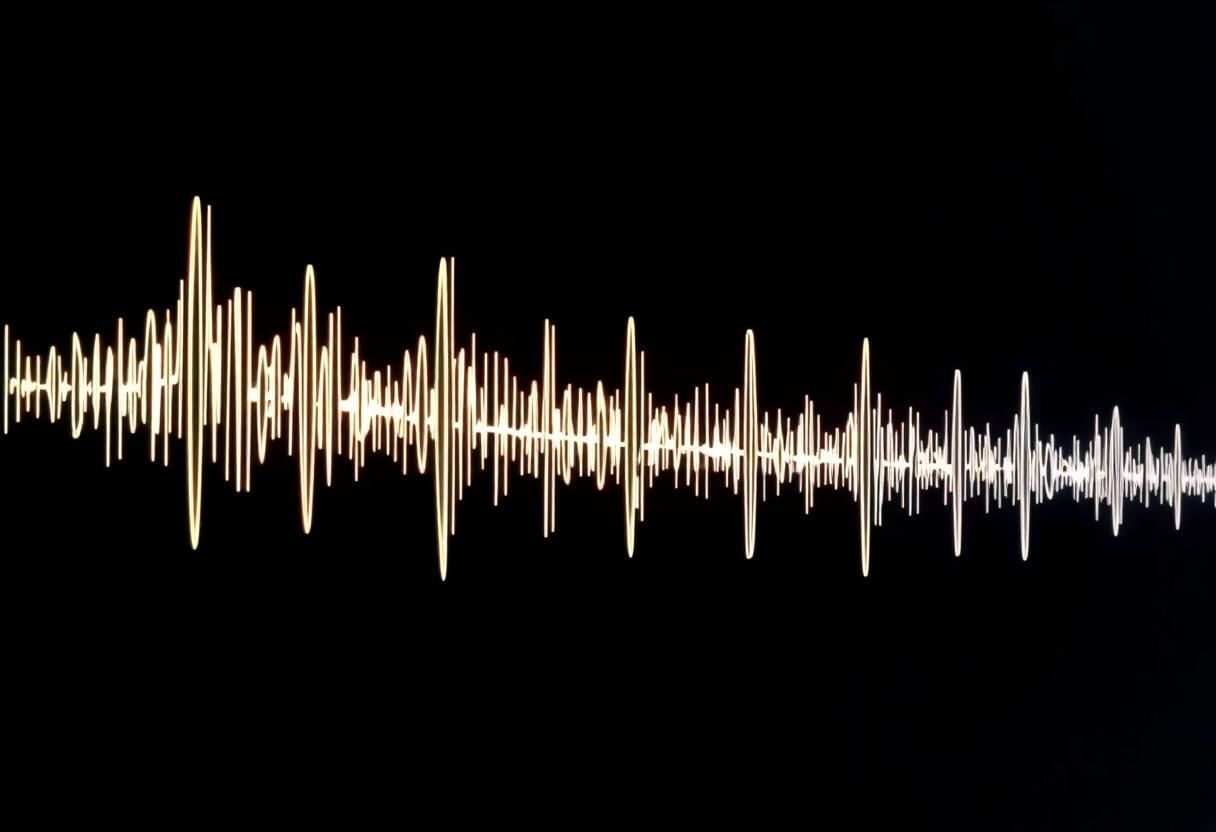Class 5 Exam > Class 5 Notes > Year 5 Science IGCSE (Cambridge) > Chapter Notes: Sound
Sound Chapter Notes | Year 5 Science IGCSE (Cambridge) - Class 5 PDF Download
| Table of contents |

|
| How are sounds made? |

|
| Volume and Pitch |

|
| Changing the Volume of Sound |

|
| Changing the Pitch of Sound |

|
How are sounds made?
 Sound Resonance
Sound Resonance
Vibrations cause sounds
- Sounds are produced when objects vibrate, which means they move rapidly back and forth.
- These vibrations are often not visible, but they can be felt, like when you hum and feel the vibrations in your throat.
- For instance, when a guitar string is plucked, it vibrates visibly, producing sound.
- Sound travels from its source to our ears through vibrations that move through a medium, such as air, water, or solid materials.
How well does sound travel through different materials?
- Vibrations from a sound source, like a struck jar, can move through various materials, including glass, plastic wrap, and air.
- These vibrations cause nearby particles to vibrate as well, passing the sound along to the listener’s ears.
- For example, when a jar is hit, the vibrations travel through the jar to a plastic wrap covering, causing the rice grains on the wrap to shift as it vibrates.
Effectiveness of Sound Travel through Different Materials
- Sound vibrations can pass through different materials, including gases (like air), liquids, and solids.
- The efficiency of sound transmission depends on the properties of the material.
- Sound travels fastest through solids because their particles are tightly packed and the materials have higher elasticity.
- Experiments can be conducted to compare how well sound travels through various materials by measuring the loudness of a sound source as it passes through each one.
Volume and Pitch
Volume
- Volume refers to how loud or soft a sound is. Louder sounds come from larger vibrations, while quieter sounds come from smaller vibrations. The volume of sound is measured in decibels (dB). For example, normal everyday noises are at a certain volume, while very loud sounds above 85 dB can be harmful to hearing. A sound level meter is used to measure sound volume in decibels.
- Pitch determines whether a sound is high or low. Sounds with a higher pitch are made by faster vibrations, while those with a lower pitch come from slower vibrations. For instance, a dog barking has a lower pitch than a bird chirping, which has a higher pitch.
Pitch
 Sound Serenity
Sound Serenity
- Pitch refers to how high or low a sound is.
- High-pitched sounds, like those made by a whistle, are produced by fast vibrations.
- Low-pitched sounds, such as thunder, come from slow vibrations.
- Some sounds are so high or low that humans cannot hear them.
- For example:
- Elephants use very low-pitched sounds, called infrasound, which humans cannot hear. Other elephants can detect these sounds from up to 7.5 kilometres away.
- Bats use very high-pitched sounds, which are also inaudible to humans, for navigation and communication.
Changing the Volume of Sound
How can we make sound louder?
- Sounds can be made louder using a sound system, which consists of:
- Microphone: Captures the sound.
- Amplifier: Increases the sound’s intensity.
- Loudspeaker: Projects the amplified sound.
- Sound systems are used in devices like CD players, televisions, and during live performances to enhance sound volume.
- Another way to increase sound volume is by directing sound through a tube, which focuses and amplifies it towards the listener’s ear.
Making sounds quieter
- Noise from traffic, horns, construction, or loud music causes noise pollution, which harms human health and wildlife.
- Muffling sounds is a method to reduce their volume when the source cannot be silenced.
Ways to muffle sound
- Ear defenders: Worn by people in noisy environments to protect their hearing.
- Carpets and curtains: Used in buildings to absorb sound and reduce noise transmission.
- Soundproofing materials: Placed between walls to block noise.
- Silencers: Fitted to vehicles like cars, trucks, and motorbikes to reduce engine noise.
Changing the Pitch of Sound
Stringed Instruments
 Musical Fusion
Musical Fusion
- The pitch of sound can be changed using stringed instruments.
- Sound is produced by stringed instruments like guitars and violins by either plucking or pressing the strings.
- Guitars have strings of varying thicknesses:
- Thicker strings produce lower-pitched sounds, while
- Thinner strings create higher-pitched sounds.
- The tension of the strings can be adjusted using pegs:
- Tightening a string increases its tension, leading to faster vibrations and a higher pitch.
- Loosening a string decreases its tension, resulting in slower vibrations and a lower pitch.
- Pressing down on a string shortens its vibrating length, which raises the pitch.
- Proper tuning is crucial for producing the correct pitch and ensuring a pleasing sound.
- When an instrument is out of tune, it tends to produce unpleasant sounds.
Have fun with wind instruments
Now, let's delve into how wind instruments produce sound:
- Wind instruments, such as flutes and panpipes, create sound by blowing air across or into hollow pipes, causing the air inside to vibrate.
- Some wind instruments have a single pipe, while others have multiple pipes of varying lengths.
- The pitch of the sound can be altered by changing the length of the air column inside the pipe:
- Blocking holes on the pipe shortens the air column, resulting in a higher pitch due to faster vibrations.
- Leaving holes open lengthens the air column, producing a lower pitch because of slower vibrations.
- For instance, when blowing across the top of glass bottles filled with different water levels, the pitch is determined by the length of the air column above the water:
- A shorter air column (less water) produces a higher pitch.
- A longer air column (more water) results in a lower pitch.
- Additionally, some wind instruments like clarinets and saxophones operate on the principle of reed vibrations, which is an important aspect of their sound production.
The document Sound Chapter Notes | Year 5 Science IGCSE (Cambridge) - Class 5 is a part of the Class 5 Course Year 5 Science IGCSE (Cambridge).
All you need of Class 5 at this link: Class 5
|
18 docs|6 tests
|
FAQs on Sound Chapter Notes - Year 5 Science IGCSE (Cambridge) - Class 5
| 1. How are sounds produced? |  |
Ans. Sounds are produced when an object vibrates, creating pressure waves in the surrounding medium, such as air, water, or solid materials. These vibrations cause the air molecules to move, which in turn creates sound waves that travel to our ears.
| 2. What determines the volume of a sound? |  |
Ans. The volume of a sound is determined by the amplitude of the sound waves. A larger amplitude means that the sound wave carries more energy, resulting in a louder sound. Conversely, a smaller amplitude produces a quieter sound.
| 3. How can we change the volume of sound? |  |
Ans. The volume of sound can be changed by adjusting the amplitude of the sound waves. This can be done by increasing the force of the vibrations (e.g., strumming a guitar string harder) or by using controls on devices like speakers to increase or decrease the output level.
| 4. What factors affect the pitch of a sound? |  |
Ans. The pitch of a sound is primarily affected by the frequency of the sound waves. Higher frequencies result in higher pitches, while lower frequencies produce lower pitches. Other factors, such as the material and tension of the vibrating object, also influence pitch.
| 5. How can we change the pitch of a sound? |  |
Ans. The pitch of a sound can be changed by altering the frequency of the sound waves. For example, tightening a guitar string raises its pitch because it increases the frequency of vibration. Similarly, changing the length of a vibrating object, like a flute, can also change the pitch produced.
Related Searches




















